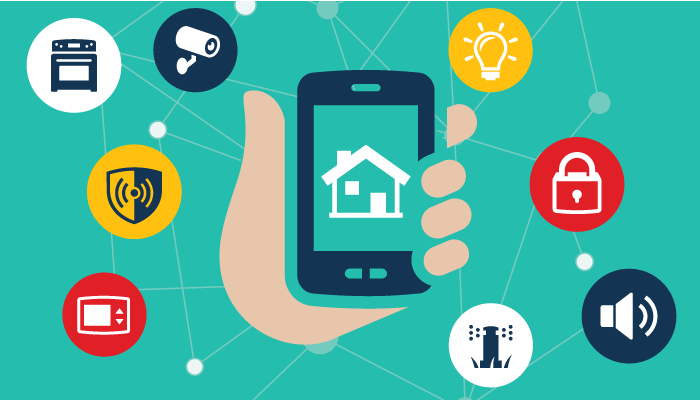Decades ago, Bill Gates predicted that there would be a desktop computer on every desk in every home.
The technology industry has advanced exponentially since, and the form factor of computing devices have evolved from bulky desktop machines to smaller portable laptops and from compact mobile devices to tiny chips that bring computing capabilities to virtually any object imaginable.
Merely connecting mundane objects to the Internet gave rise to the trend of the Internet of Things (IoT). The connected devices send raw data to the cloud that is processed for analytics, automation, or other use cases across the backed network. In a world where more than 20 billion devices are already connected to the Internet and generate a deluge of data pushing the networking capacity to its limits, technology vendors and connectivity service providers need a solution to maximize IoT adoption while relieving network congestion.
The opportunity lies in the sophisticated technology concept of the Intelligent Edge that aims to further Bill Gates vision of bringing computing capabilities to everything, everywhere. Let’s take a look at this concept.
Defining intelligent edge
Intelligent edge refers to the computing processes performed at the site of data generation—the edge of the network or a geographic edge. Intelligent Edge enables the aggregation, analysis and processing of IoT data in remote and even decentralized network nodes that may not be online and connected with backend cloud data centers.
We can further categorize the intelligent edge as:
- Operational technology edge. The farthest layer of computing technology where the technology causes changes in physical processes. Examples include the SCADA network devices in the electricity transmission and distribution network.
- IoT edge. The layer of physical devices generating data to facilitate changes in physical and digital processes. Examples range from smart home devices to connected cars and everything smart in between. The term is used to describe the wider concept of the modern-day Intelligent Edge.
- Information technology edge. This represents computing operations at the network layer, away from the backend data center resources and closer to the data sources. The computing processes at the IT edge cause changes in the digital network operations.
What makes an edge intelligent?
Although the evolving concept of Intelligent Edge encompasses the three categories above, the most popular and widely adopted term of IoT Edge is used to represent the concept of Intelligent Edge.
Before digging into the philosophy behind Intelligent Edge and its future, we need to understand the key components that define intelligence in a device at the edge:
- Connectivity. The devices should be connected to the Internet or an internal decentralized network.
- Computing. Embedded processing chips should facilitate intelligent decision making to perform physical or digital changes in the operation of the connected device.
- Control. A layer of automation to control the changes within the device or instigate actions externally, within other devices across the network.
- Autonomy. The device or the edge network node operates autonomously to perform computing processes such as aggregation, analysis, and processing of information without sending raw streams of data to the backend network.
The future of the intelligent edge
Considering the fast-paced evolution of intelligent connected devices, the concept of Intelligent Edge may include next-generation autonomous capabilities such as:
- Data processing
- Decision making
- Actions within a decentralized sensor networ
A move toward a truly Intelligent Edge is driven by advancement in ubiquitous computing, AI, and demands for multi-device end-user experiences. A seamless and synchronized user experience across the increasing number of connected devices is required to ensure useful end-user interactions with a universe of interconnected devices.
As a result, there will be a minimal threshold to switch between the devices to perform coordinated computing operations and access information across multiple devices. Computing capabilities will be present ubiquitously in so many devices and objects that it will be difficult to identify a computing device from an object with no computing capabilities.
In the future, Intelligent Edge promises unprecedented value to technology vendors and consumers alike:
- Low dependence on network performance. Computing on the edge eliminates the need to transfer data between frontend connected devices and centralized backend cloud servers. As a result, the computing performance doesn’t depend on network performance parameters such as bandwidth, latency and data rate.
- Low cost. Low consumption of network resources lead to low cost of operations. The computing requirements on cloud data centers are also reduced since data and compute processing takes place at the edge. Improved system efficiency further enhances the profitability of edge computing investments.
- Seamless user experience. App functionality and services can be moved across edge network nodes without necessitating modifications or service interruptions on part of end-users. When users move between different electronic environments, the edge computing devices can integrate and synchronize the required information to enable the required app functionality.
- Real-time intelligence. Accelerated developments in AI chips have the potential to revolutionize the IoT industry and transform connected IoT devices into truly smart computing systems. Applications such as voice assistance, autonomous vehicle driving features and electronic health monitoring technologies can integrate into human lives with minimal disruption and risk. As a result, intelligent computing capabilities can be commoditized to expand the global userbase.
- Compliance & security. Industries that face stringent regulations can reduce the compliance risk significantly as sensitive patient information can be aggregated and processed at the device level. The data remains at rest within a secure network edge since it is not accessed or connected with backend IT infrastructure to collect and process raw streams of information into useful knowledge.
For technology vendors, Intelligent Edge has emerged as an opportunity to make connected devices more capable and aware of the surrounding network environment. At the same time, the devices reduce the burden on the network despite generating and processing more data than ever before.
For consumers, Intelligent Edge is emerging as a significant leap forward to make connected devices truly smart and integrated within our lifestyle.
Intelligent Edge has already proven its potential to make a real impact to the society in the same way as desktop computers achieved in the early 90s. But before Intelligent Edge becomes a ubiquitous reality, vendors will need to prove its financial viability, security and real-world performance from a customer perspective. All of this may take years ahead to materialize.
Related reading
- BMC Multi-Cloud Blog
- Edge AI: Edge Artificial Intelligence Explained
- The Empowered Edge: An Introduction
- Intro To AWS Snowball Edge
- What Is the Internet of Behavior? IoB Explained
These postings are my own and do not necessarily represent BMC's position, strategies, or opinion.
See an error or have a suggestion? Please let us know by emailing blogs@bmc.com.






